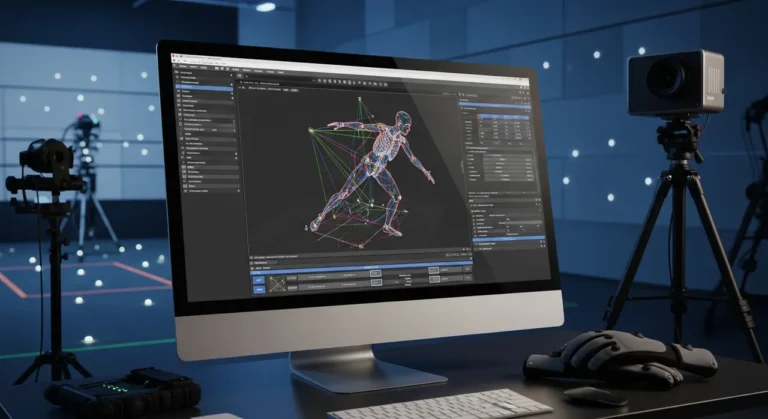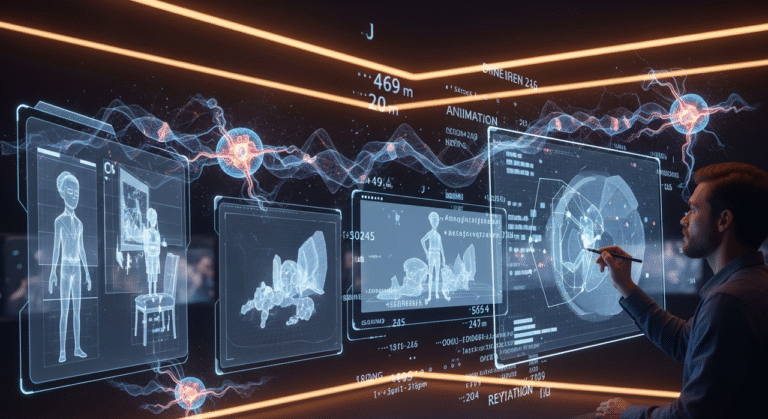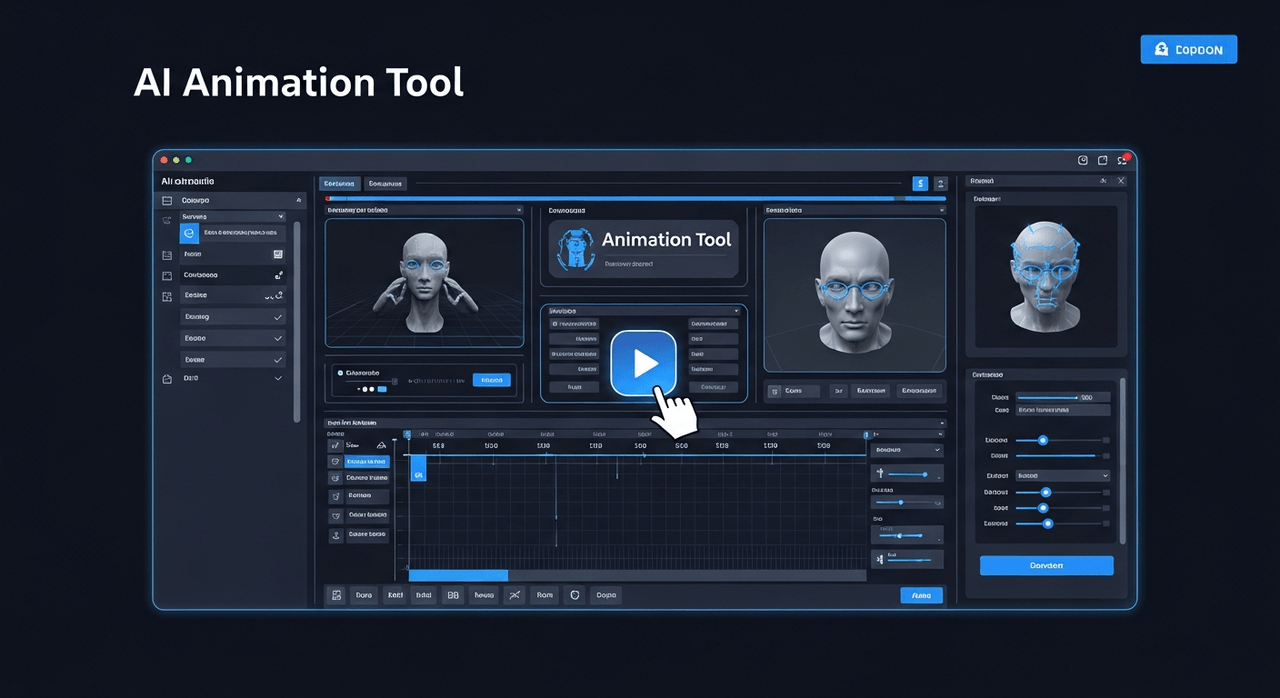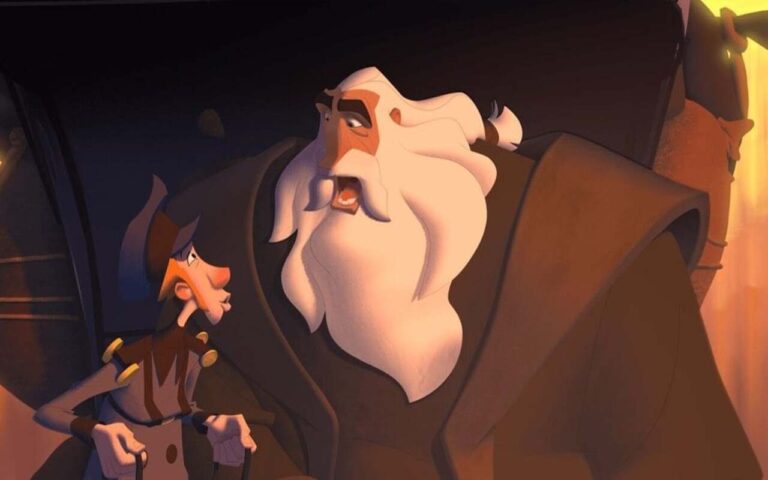In the landscape of visual art, concept art is the vital source of creativity, and concept artists are the essential visionaries who shape the visual soul of games, turning abstract ideas into captivating worlds and characters.
From fantastical realms to mysterious dystopias, concept artists weave imagination into reality, defining the look and feel of immersive experiences.
The concept artist‘s trade centers around a deep learning of narrative, world-building, and visual conversation.
In this guide, we will explore a concept artist’s role, skills, tools, and challenges, highlighting their critical impact on game art.

Need Animation Services?
Visit our Animation Service page to see how we can help bring your ideas to life!
What Is a Concept Artist?
A concept artist is a creative professional who designs the initial visual blueprints for games, films, and animations, crafting the aesthetic foundation for worlds, characters, props, and environments.
They translate abstract narrative concepts and gameplay ideas into tangible artwork, such as sketches, mood boards, and detailed illustrations, that set the tone and style of a project.
Beyond artistry, concept artists blend storytelling, cultural references, and technical insight to create designs that are both inspiring and feasible within production constraints, making them pivotal in shaping immersive experiences.
By laying the groundwork for a project’s aesthetic, concept artists spark the creative process, turning vague ideas into vibrant, actionable designs that captivate players and drive development forward.
Why Concept Artists Matter in Game Development
Concept artists are the cornerstone of a game’s visual identity, transforming abstract ideas into a cohesive and immersive aesthetic that defines the player experience.
Their designs establish the critical role of concept art elements like character color palettes, architectural styles, character silhouettes, and atmospheric tones, ensuring every asset aligns with the game’s narrative and gameplay goals.
In pre-production, concept artists collaborate with writers and directors to create mood boards and sketches that set the project’s direction, influencing everything from level design to marketing materials.
During production, their high-fidelity artwork guides 3D modelers, texture artists, and animators, ensuring consistency across assets.
By anticipating technical constraints, they help balance creativity with feasibility, preventing costly redesigns.
Concept artists also enhance storytelling by embedding symbolic elements and visual cues, enriching the narrative depth and making games memorable, from sprawling RPGs to intense shooters.
Essential Skills Every Concept Artist Needs
Concept artists require a blend of artistic talent, technical proficiency, and storytelling prowess.
Artistic Foundations: Anatomy, Composition, and Perspective
Mastery of anatomy ensures lifelike characters, precise facial expressions, and smooth movements to guide the viewer’s eye effectively.
Having efficient knowledge of perspective principles helps you create depth in environments to enhance immersion.
These fundamentals craft convincing, engaging designs.
Digital Tools and Techniques Used in the Industry
Proficiency in software like Photoshop, Procreate, and Blender is essential.
Artists use digital brushes, 3D sculpting, and rendering techniques to create polished concepts. Understanding game engine workflows enhances asset integration.
Storytelling Through Visual Language
Concept artists use color theory, symbolism, and composition to convey narratives.
Their designs evoke emotions and atmospheres that can enrich game stories through visual metaphors, adding depth and engaging players on a deeper level.
Collaboration and Cross-Disciplinary Harmony
Concept artists thrive in collaborative environments, working closely with writers, designers, and art directors.
They translate abstract ideas into visuals that align with the game’s narrative and gameplay. Through iterative feedback, concept artists refine designs to unify the team’s vision.
Their partnership with art directors shapes the game’s aesthetic, ensuring consistency across all assets.
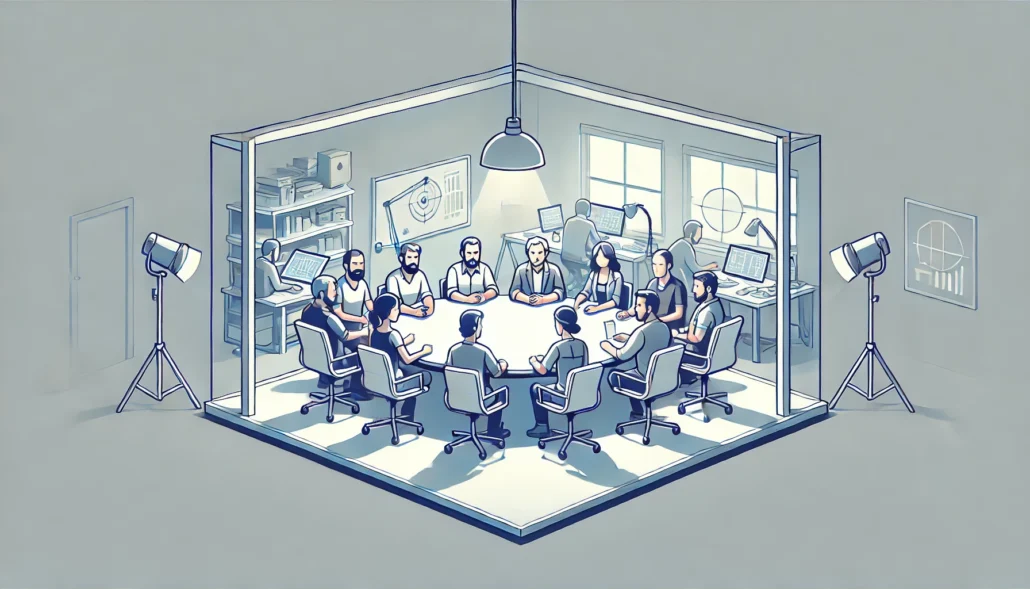
Tools and Software Used by Concept Artists
The right tools empower concept artists to bring visions to life efficiently.
Popular Industry Software
- Adobe Photoshop: The industry standard for 2D art, Photoshop offers robust tools for digital painting, texture creation, and photo manipulation.
Its layer-based workflow and extensive brush libraries enable detailed illustrations and seamless editing. It also integrates well with game engines via exportable formats such as PNG and PSD. - Procreate: A favorite for tablet-based artists, Procreate provides an intuitive interface for sketching and painting on the go. Its responsive brushes and streamlined controls make it perfect for rapid ideation and concept sketches. Its export options (e.g., PSD, PNG) ensure compatibility with other tools.
- Blender: A free, open-source 3D tool, Blender supports concept artists with sculpting, modeling, and rendering capabilities.
It’s used for 3D concept prototypes, such as character models or environment mockups, offering a quick way to visualize designs in three dimensions.
Its integration with game engines like Unreal Engine or Unity makes it valuable for pipeline workflows.
You can check out the following video on more industry-standard software tools for creating stunning concept art.
Traditional vs. Digital Techniques
- Traditional techniques, such as sketching or painting, are still valuable and irreplaceable for building foundational skills and generating initial ideas.
Sketchbooks enable artists to explore concepts freely, without software constraints, fostering creativity during early brainstorming. - Digital tools, however, dominate modern workflows due to their speed, flexibility, and ease of iteration.
Software like Photoshop and Procreate enables rapid revisions, layer management, and direct integration with 3D game art pipelines.
Many artists mix both of these approaches, starting with traditional sketches to capture raw ideas before refining them digitally for precision and scalability.
The choice depends on the artist’s style, project deadlines, and the need for collaboration with technical teams.
Common Challenges Concept Artists Face
Concept artists navigate a complex landscape of creativity and practicality, leading them toward several challenging situations.
Balancing Creativity with Technical Constraints
Concept artists create bold designs while considering engine limitations and hardware capabilities. They collaborate with technical teams to ensure feasibility with maximum creativity.
Balancing imagination with practicality is a constant challenge.
Effective communication mitigates these constraints.
Adapting to Feedback and Changing Directions
It’s no surprise that art projects often shift, requiring concept artists to revise or pivot designs quickly.
Accepting and integrating feedback from directors and other members of the animation teams is crucial.
Flexibility ensures concepts align with evolving goals, whereas adaptability preserves the artistic vision under pressure.
Career Paths and Industry Opportunities
The road to becoming a concept artist requires commitment, determination, a lot of love, and the pursuit of art for success.
Concept artistry offers diverse, rewarding career paths across creative industries.
Working in Games, Animation, Film, and More
- In gaming, they work for studios like Ubisoft, Blizzard, or CD Projekt Red, designing characters, environments, and props for titles ranging from AAA RPGs like The Witcher to indie gems like Hollow Knight.
- In animation, companies like Pixar and DreamWorks rely on concept artists to craft vibrant characters and settings for films like Toy Story or How to Train Your Dragon, shaping the emotional tone of stories.
- In film, concept artists collaborate with directors at studios like Marvel or Lucasfilm to visualize epic scenes, costumes, and creatures, as seen in Avengers or Star Wars.
- Beyond traditional media, concept artists contribute to virtual reality (VR) and augmented reality (AR), designing immersive interfaces and environments for platforms like Oculus or AR apps like Pokémon GO.
- They also work in theme park design, creating concepts for rides and attractions at places like Disney or Universal Studios.
- Emerging fields like the metaverse and NFT art offer new opportunities, with artists shaping virtual worlds and digital collectibles.
This versatility ensures concept artists can explore diverse genres, from sci-fi to historical, adapting their skills to varied creative demands.
Freelance vs. Studio Roles
- Freelancing offers flexibility, allowing artists to work on multiple projects through platforms like Upwork, Fiverr, or ArtStation Marketplace.
Freelancers enjoy creative freedom, choosing projects that align with their style, but must handle self-marketing, client negotiations, and inconsistent income. - Studio roles provide stability, benefits, and collaborative environments at companies like EA or Pixar.
Studio artists benefit from structured workflows, mentorship, and access to cutting-edge tools, but may face tighter creative constraints.
Both paths require strong portfolios showcasing diverse styles and technical skills. Freelancing suits self-driven artists; studio work fosters team synergy and long-term career growth.
Final Words
These days, as tech becomes more sophisticated and blurs the lines between reality and the virtual realm, the concept artist has become as important as ever in game development.
Concept artists must become versatile artists who may use traditional, as well as usual digital art, and even sculpt in 3D.
They also should focus on strong knowledge of anatomy, perspective, and composition since these are the fundamentals that allow for convincing and engaging designs.
In addition, keeping up with industry trends, learning from established concept artists, and engaging with online communities are also incredibly beneficial methods of learning.
Plus, collaboration and networking are the primary factors that can lead to potential mentorships, workshops, and job opportunities in the always-changing landscape of game development.
